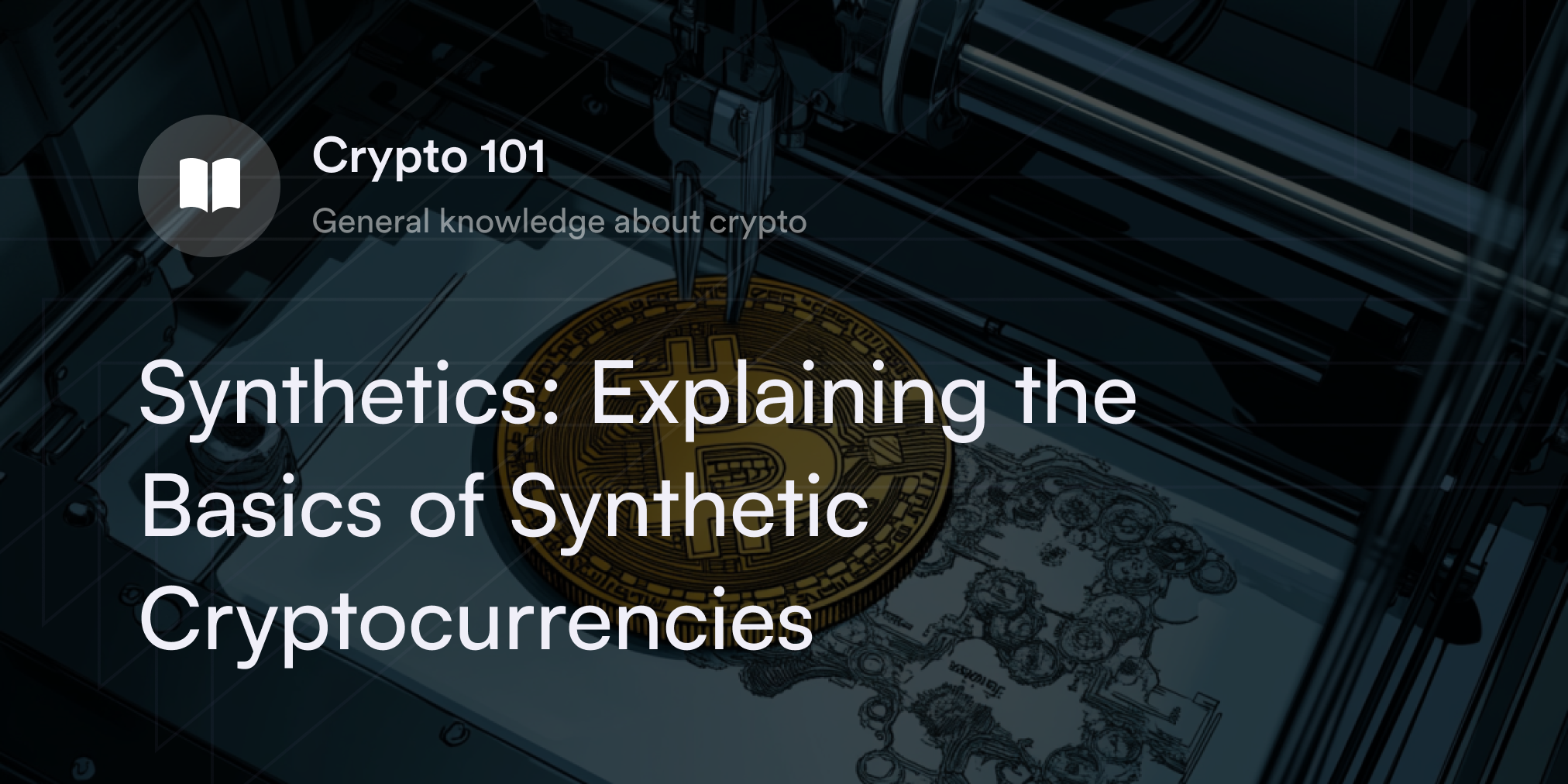


Decentralization is a defining feature of the cryptocurrency ecosystem. After all, if cryptocurrencies couldn’t process transactions without a central authority, they would be no different from fiat currencies or fintech apps.
Instead of relying on banks, governments, or corporate entities, cryptocurrencies use a new form of technology called "blockchain" to broadcast payment information in a decentralized manner. "Nodes" are crucial components in blockchain infrastructure that communicate and store transaction data.
Sending and receiving cryptocurrencies would be impossible without a robust network of nodes. Learning what blockchain nodes are and how they work helps traders appreciate the revolutionary potential of blockchain technology.
What is a Node in Blockchain?
Simply put, a blockchain node is a connection point in a cryptocurrency's network. Although nodes are often associated with computers, they refer to all the devices and applications linked to a blockchain. In other words, nodes can be any hardware or software traders use to interact with cryptocurrencies. All of the processes nodes perform help keep blockchains secure without compromising their decentralization because they keep the responsibilities of maintaining blockchains dispersed among many nodes rather than a centralized entity.
Besides connecting a decentralized network, nodes store essential transaction data and broadcast new payments throughout their respective blockchains. While different nodes have unique tasks and responsibilities, they all work together to communicate the current state of the blockchain. Nodes also have mechanisms to cross-reference new information before posting it on the public payment ledger.
How do Blockchain Nodes Work?
Nodes continuously broadcast, store, and confirm transactions, but each blockchain uses a different algorithm to organize its data flows. A blockchain's "consensus algorithm" determines how nodes communicate with each other and reach agreements. This makes consensus algorithms the "rules" blockchain nodes need to follow. There are dozens of consensus mechanisms in the blockchain space, but the two most common are Proof-of-Work (PoW) and Proof-of-Stake (PoS).
On PoW blockchains, node operators use electrical power to solve advanced mathematical problems. Whichever computer deciphers these puzzles within a given period gets to broadcast new blocks of transactions on the blockchain. To incentivize more people to run nodes, PoW chains reward successful miners with cryptocurrency.
Bitcoin is the most established PoW blockchain. "Miners" on the Bitcoin network use specialized computers called “ASIC rigs” to outcompete other nodes. Every 10 minutes, the Bitcoin blockchain creates a new math problem for computers to solve. Bitcoin's algorithm also makes node operators confirm each transaction six times before posting it on the official BTC ledger.
Instead of using math puzzles and computational power, PoS networks make nodes lock (or "stake") set sums of the blockchain's native cryptocurrency. In exchange for locking crypto on the blockchain, nodes receive the opportunity to validate new transactions and earn "staking rewards" (often more of the cryptocurrency). Staking participants lock an amount of cryptocurrency as collateral: If they validate incorrect or fraudulent transactions, they may lose some or all of their stake. Typically, the nodes that stake the most crypto have the greater odds of confirming transactions, but every PoS algorithm has a slightly different system for choosing validators.
Following its 2022 Merge upgrade, Ethereum (ETH) is the largest PoS chain. Validator nodes on Ethereum must stake 32 ETH to earn rewards. Dozens of new crypto projects, including Solana, Cardano, and Polkadot, also use a PoS system.
Types of Nodes in Blockchain
Not every blockchain node has the same function. Some nodes store reams of transaction data, while others broadcast cryptocurrency transfers. Although every node has a role to play, not all have the same features or significance. Here are the types of nodes:
Full nodes: A full node (or “master node”) stores a cryptocurrency's entire transaction history, known as its “ledger.” Because the files for ledgers are large and continuously growing, full nodes have high memory and energy requirements. Master nodes also confirm and broadcast new transactions.
Lightweight nodes: Also called "partial nodes," lightweight nodes allow anyone to make transactions without downloading a blockchain's entire ledger. For example, when people use a crypto wallet to send Bitcoin to another wallet, they use a lightweight node. These nodes can't participate in the validation process, but they make cryptocurrency transactions possible.
Lightning nodes: Lightning nodes record transactions on a separate settlement layer (known as a "layer 2 blockchain") before posting them on another blockchain. The purpose of lightning nodes is to remove network congestion from the target blockchain. Bitcoin's Lightning Network is the most widely used protocol that runs on lightning nodes.
Mining nodes: Cryptocurrencies that use a PoW system need mining nodes that use computer power to solve algorithms and confirm transactions. These blockchains use miners as master nodes versus software-based PoS platforms. Bitcoin is the most prominent blockchain with mining nodes, but other cryptocurrencies like Dogecoin, Litecoin, and Bitcoin Cash also use PoW protocols.
Authority nodes: Some blockchains use a Proof-of-Authority (PoA) mechanism to preapprove the nodes in their system. While PoA systems reduce a chain's decentralization, they improve transaction speeds and often result in lower fees.
Staking nodes: PoS blockchains use staking nodes to secure their network and validate new transactions. As mentioned, anyone running a staking node must lock a set amount of crypto to participate in the validation process.
Why are Blockchain Nodes Important?
Cryptocurrencies simply wouldn't work without a node infrastructure because blockchain nodes play a vital role in transmitting and storing transaction data. Without any nodes on a network, there would be no way for decentralized blockchains to communicate and reach agreements.
Additionally, blockchain nodes have paved the way for Web3 innovations such as decentralized applications (dApps). Unlike traditional apps, dApps run on blockchains. The decentralization provided by blockchain nodes creates opportunities for dApps to be more censorship-resistant and privacy-focused than traditional apps. Developers have already begun using blockchain nodes to create dApps in the decentralized finance (DeFi) space for trustless cryptocurrency trading, lending, and borrowing.
Can Blockchain Nodes be Hacked?
Hackers can break into blockchain nodes, but it's unlikely to occur on large blockchains. If someone wanted to corrupt a blockchain like Bitcoin, they would need to take control of 51% of the chain's power. BTC's network has grown so large that the cost to carry out a 51% attack is likely more than the expected return.
But just because 51% attacks aren't likely doesn't mean they can't happen. There are many examples of smaller chains (such as Ethereum Classic and Bitcoin Gold) that have struggled with these types of hacks. However, as blockchain networks grow larger and more decentralized, node operators have more incentive to play by the rules. The cost of attacking a blockchain becomes increasingly prohibitive as more computers join the network.
Also, PoS blockchains use a protocol known as "slashing" to deter bad actors. If a PoS algorithm notices a node operator disobeying the protocol's rules, it will automatically deduct (or "slash") that node's crypto collateral. New solutions like slashing reduce the odds of blockchains suffering 51% attacks.
Can Anyone Run a Blockchain Node?
Anyone can open a node if a blockchain has an open-source protocol. However, each blockchain has unique hardware and software specifications. For example, running a Bitcoin node is exceptionally costly, especially as companies open colossal mining farms. Meanwhile, some PoS chains have high staking requirements to become a validator.
Anyone interested in running a blockchain node must review the technical requirements associated with their blockchain. Also, remember that operating a node typically requires significant memory storage and energy output. People who run blockchain nodes may need to use a specific device for this purpose.
Lightweight nodes are the exception. Crypto wallets, hot and cold, are generally accessible. Most people interested in dabbling in cryptocurrency can set up a wallet and start buying, trading, and/or HODLing.
Learn More About Crypto with dYdX
dYdX is committed to democratizing access to financial opportunity. If you'd like to learn more about our product and the trading options we offer, check out our blog. You could also explore perpetual contracts on dYdX's trading platform. We offer dozens of cryptocurrency perpetual contracts with up to 20x leverage.
Explore our YouTube channel to learn more about dYdX and our product through video content. You can also browse our academy to improve your understanding of crypto and trading strategies. Head to our main page to start trading on dYdX today!
Disclaimer
The content of this article (the “Article”) is provided for general informational purposes only. Reference to any specific strategy, technique, product, service, or entity does not constitute an endorsement or recommendation by dYdX Trading Inc., or any affiliate, agent, or representative thereof (“dYdX”). Use of strategies, techniques, products or services referenced in this Article may involve material risks, including the risk of financial losses arising from the volatility, operational loss, or nonconsensual liquidation of digital assets. The content of this Article does not constitute, and should not be considered, construed, or relied upon as, financial advice, legal advice, tax advice, investment advice, or advice of any other nature; and the content of this Article is not an offer, solicitation or call to action to make any investment, or purchase any crypto asset, of any kind. dYdX makes no representation, assurance or guarantee as to the accuracy, completeness, timeliness, suitability, or validity of any information in this Article or any third-party website that may be linked to it. You are solely responsible for conducting independent research, performing due diligence, and/or seeking advice from a professional advisor prior to taking any financial, tax, legal, or investment action.
You may only use the dYdX Services in compliance with the dYdX Terms of Use available here, including the geographic restrictions therein.
Any applicable sponsorship in connection with this Article will be disclosed, and any reference to a sponsor in this Article is for disclosure purposes, or informational in nature, and in any event is not a call to action to make an investment, acquire a service or product, or purchase crypto assets. This Article does not offer the purchase or sale of any financial instruments or related services.
By accessing this Article and taking any action in connection with the information contained in this Article, you agree that dYdX is not responsible, directly or indirectly, for any errors, omissions, or delays related to this Article, or any damage, injury, or loss incurred in connection with use of or reliance on the content of this Article, including any specific strategy, technique, product, service, or entity that may be referenced in the Article.







